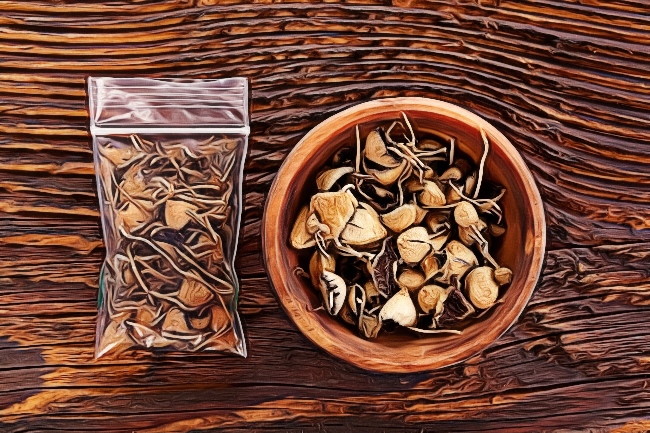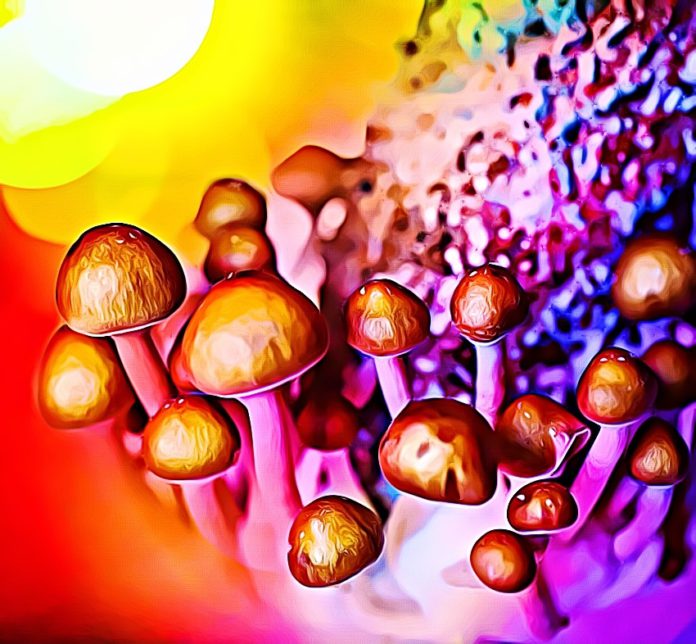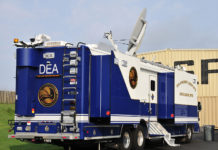There are many ways to let your mind loose and fly higher than cloud nine, but one of the most psychotropic experiences you can get is from natural hallucinogenic like mushrooms. These are a far cry from the mushrooms you’d pick at grocery stores since these contain psilocybin, a psychoactive substance that can cause a colorfully intense, cerebral high.
While they are called magic mushrooms for the way they produce an otherworldly experience, it’s not as magical as you think, considering the detrimental risks of this Schedule I drug. That’s why we’re here to break down the basics of mushrooms and demystify their mysterious compounds.
What are Psychedelic Mushrooms?
Also known as shrooms, mushies, blue meanies, golden tops, liberty caps, philosopher’s stones, liberties, Amani, or agaric, these mushrooms are some of the most iconic psychedelics across the world.
You can recognize magic mushrooms from their long, slender stems taking on dirty white color, while the caps appear dominantly dark brown, fading to a lighter shade in the center. You can take mushrooms by eating them raw, mixing them with food, drinking them with lemon, or brewing it with tea for easier digestion.
Different Types of Psychedelic Mushrooms
It can be tricky to pinpoint psychedelic mushrooms or at least those containing psilocybin since it has over a staggering 200 species, each with distinct qualities that produce a unique high. Identifying the differences is critical since magic mushrooms are often interchanged with poisonous strains due to their similar appearances, so we’re here to touch on some of the most perennial shrooms dominating thrill-seekers worldwide.
- Psilocybe Cubensis
Earning the number one spot for its global popularity, this is the go-to strain as far as magic shrooms go. It takes on an iconic look thanks to its eye-catching cinnamon-brown cap with either a white or yellow stem, though it can turn a dull blue hue once it is bruised. Through time, it can grow into a conical shape that extends between 2-8 cm.
- Psilocybe Mexicana
The second most coveted type of mushroom is the Psilocybe Mexicana, a strain commonly found in Central and South America. These take on a brown cap that reaches 0.5-2 cm, though it can turn blue once it sustains injuries during its growth. The browner ones are typically chosen since it means it’s generally safe to consume compared to the abused, bluish Mexican mushrooms.
- Psilocybe Semilanceata
Widely regarded as a “liberty bell,” this type of shrooms often grow in grassy fields where animals can roam free and graze. You can distinguish these types by its large, conical cape ranging from 5-25mm.
- Psilocybe Aurescens
Prominent around the verdant landscapes of the northern Oregon Coast, this type can stand out from the crowd with its cap mimicking the shape of a flying saucer. Despite it not receiving the same level of recognition, it’s one of the most potent species that can deliver the mind-blowing and hallucinatory high within 30 minutes.
- Psilocybe Cynescens
Prevailing across the United Kingdom and North America, this type has a stunning appearance due to its wavy caps. It also has high amounts of psilocybin and psilocin, which means its psychedelic effects can pack a punch.

What Do Shrooms Feel Like and What Are the Side Effects?
Out of the hundreds of species under magic mushrooms, most of them produce relatively the same effects. The type of strain changes the potency and the speed at which a person feels high, but generally, all shrooms bring users on a kaleidoscopic trip involving sensations of extreme euphoria, an introspective compulsion, and many more side effects marked by delusions.
Physical Effects of Magic Mushrooms:
- Dilated pupils
- Drowsiness
- Headaches
- Increased heart rate, blood pressure, and temperature
- Lack of coordination
- Muscle weakness
- Nausea
- Yawning
- Convulsions
Mental Effects of Magic Mushrooms:
- Distorted sense of time, place, and reality
- Euphoria
- Hallucinations (visual or auditory)
- Introspective experiences
- Panic
- Paranoia
- Psychosis
- Nervousness
The overall experience can be overwhelming to many since the hallucinations can be frightening, triggering panic attacks and anxiety in a high-dosage consumption. While further research needs to be done, some studies show how magic mushrooms can influence users’ personalities over time.
How Long Do Shrooms Last in Your Body’s System?
Magic mushrooms can take you on a psychedelic journey that typically lasts between six to twelve hours, though they can stay in your system for longer periods. One of the tests done to reveal the presence of psilocybin involves using hair follicles, which can contain the drug’s substances for up to a whopping 90 days.
Many drugs — either made by man or Mother Nature — can cause the body to build up a tolerance. Magic mushrooms are not exempted and are, in fact, one of the fastest hallucinogenics that develop tolerance in just one usage.
This can be dangerous since you’ll need to double the dosage every time you use it to mimic the same level of potency, which increases the risk of overdose. While consuming too many mushrooms than your body can handle does not lead to fatal situations, overdosing on shrooms can still be a vicious experience since it causes vomiting, diarrhea, agitation, muscle weakness, paranoia, delirium, and seizures.
The Bottom Line: Breaking the Myths Behind the Magic of Psychotropic Mushrooms
Magic mushrooms are one of the least fatal drugs, but despite their lack of addictive qualities, the intense trip can cause significant changes to a person’s disposition after long-term use. Not to mention, picking mushrooms can be highly deadly, and even the most trained eye can still mistakenly interchange the psychotropic mushrooms with the poisonous bunch.
Users who develop a high tolerance and combine the hallucinogenic drug with alcohol or other drugs can also be at risk of experiencing extreme paranoia, leading to dangerous situations. If you suspect your loved ones are experimenting with shrooms regularly, it’s best to help educate them on their potential hazards.
The road to sobriety is challenging, but having the right treatment program to support your journey can make a world of difference in your progress. We can help guide you every step of the way by connecting you with the best rehab centers in multiple states in the USA.
















